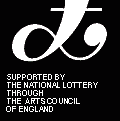Timing and sequence:
This class will take about 40 minutes, though the timing will depend on how thoroughly one discusses each task, how many students there are in the class and whether the students bring their draft poems to workshop at the end. If there are plenty of drafts to discuss, it will take longer.
Show Don’t Tell is the keynote lesson in a programme of creative writing. It teaches fundamental principles, principles which form the basis of all re-drafting of writing thereafter, so if you wish to use it to launch a series of poetry workshops, you could plan it in as the centre-piece of your sequence and see Follow-ups for other work. Follow-ups, at the end, makes suggestions for developing the themes of the lesson and for extending the writing programme. Since this lesson works through examples of the haiku form (though the principles could equally well be taught through other forms), it is probably advisable to introduce the class to haiku beforehand. Use Master Basho’s Spirit, also on this website, to introduce haiku.
Age-range:
This lesson approaches creative writing by distinguishing between the abstract and the concrete, academic language and literary language, the general and the particular, so children are unlikely to be ready for it before the age at which they think in abstract terms and are becoming academic - thirteen or fourteen years old, perhaps. It certainly works well with fifteen year olds and college/University students.
You will find that there is very little need for this learning in younger children! The vices this lesson warns against are vices of over-intellectual sophistication and too much academic cleverness. Young children will not, we hope, be suffering from these curses.
Method
1. Read through the self-study unit and do the tasks, so that you understand the material thoroughly.
2. Read more information on aspects of haiku, if you wish, by jumping to the articles in the Reference section, in order to be more fully informed when it comes to discussion of the poems in class. Form, Metaphor, and The Two-Image Haiku are all relevant to the concerns of this lesson.
3. Download the Photocopiable formatted Source Pages in the file at the end of the lesson, and photocopy sufficient numbers of each page for your students. You have our permission to copy copyright poems and translations for teaching purposes, but you may not re-publish copyright poems or translations without the express permission of the writers or their publishers.
4. Take your students through the stages of the lesson as shown in the self-study unit, leaving enough time at the end (about half an hour) for them to workshop their drafts (or keep this for the next lesson).
5. If you still have some time and energy left, go straight on to the Follow-ups. Otherwise, follow up in a subsequent lesson.
Accordingly, the lesson below is set out in the form of a self-study unit. At certain points there are Notes for Teachers on how to manage the material in the classroom.


